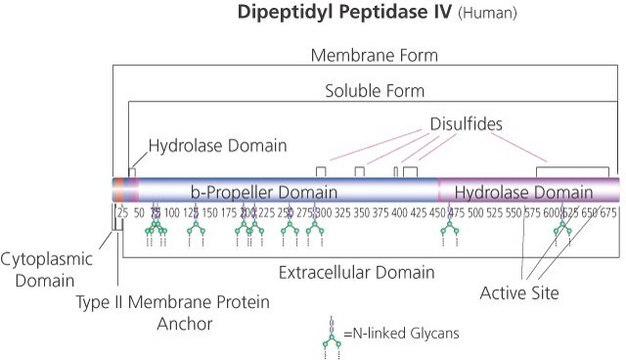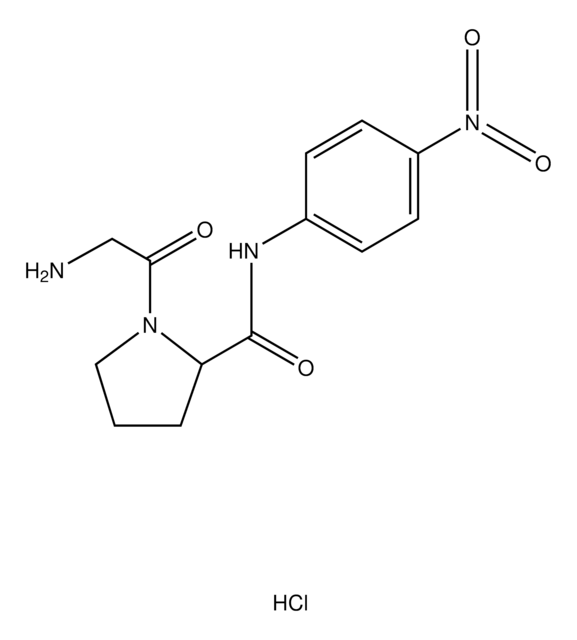D3196
Dipeptidyl Peptidase VIII human
recombinant, expressed in Sf9 cells
Sign Into View Organizational & Contract Pricing
All Photos(1)
About This Item
UNSPSC Code:
12352204
NACRES:
NA.54
Recommended Products
Application
Human dipeptidyl peptidase VIII has been used in a study to identify ERGIC-53 as an intracellular transport receptor of α1-antitrypsin. Human dipeptidyl peptidase VIII has also been used in a study to investigate the cargo selectivity of the ERGIC-53/MCFD2 transport receptor complex.
Biochem/physiol Actions
Dipeptidyl peptidase VIII (DPP8) is a 100 kDa monomeric protein expressed in the cytoplasm. It is a postproline dipeptidyl aminopeptidase that is homologous to DPPIV and fibroblast activation protein (FAP). It hydrolyzes Ala-Pro, Arg-Pro and Gly-Pro. DPP8 has a neutral pH optimum. It may be involved in T-cell activation and immune function as it is similar to DPPIV . It is upregulated during immune activation.
Physical properties
Full length sequence with an N-terminal GST tag
Unit Definition
One unit will hydrolyze 1.0 picomole of Ala-Pro-AMC per minute at pH 7.4 at 25 deg °C
Physical form
Supplied as a solution in 40 mM Tris-HCL, pH 8.0, 110 mM NaCl, 2.2 mM KCl, 3 mM DTT and 20% glycerol.
Storage Class
10 - Combustible liquids
wgk_germany
WGK 1
Certificates of Analysis (COA)
Search for Certificates of Analysis (COA) by entering the products Lot/Batch Number. Lot and Batch Numbers can be found on a product’s label following the words ‘Lot’ or ‘Batch’.
Already Own This Product?
Find documentation for the products that you have recently purchased in the Document Library.
Beat Nyfeler et al.
The Journal of cell biology, 180(4), 705-712 (2008-02-20)
Secretory proteins are exported from the endoplasmic reticulum (ER) by bulk flow and/or receptor-mediated transport. Our understanding of this process is limited because of the low number of identified transport receptors and cognate cargo proteins. In mammalian cells, the lectin
Beat Nyfeler et al.
Traffic (Copenhagen, Denmark), 7(11), 1473-1481 (2006-10-03)
Exit of soluble secretory proteins from the endoplasmic reticulum (ER) can occur by receptor-mediated export as exemplified by blood coagulation factors V and VIII. Their efficient secretion requires the membrane lectin ER Golgi intermediate compartment protein-53 (ERGIC-53) and its soluble
C A Abbott et al.
European journal of biochemistry, 267(20), 6140-6150 (2000-09-30)
Dipeptidyl peptidase (DPP) IV has roles in T-cell costimulation, chemokine biology, type-II diabetes and tumor biology. Fibroblast activation protein (FAP) has been implicated in tumor growth and cirrhosis. Here we describe DPP8, a novel human postproline dipeptidyl aminopeptidase that is
Our team of scientists has experience in all areas of research including Life Science, Material Science, Chemical Synthesis, Chromatography, Analytical and many others.
Contact Technical Service

